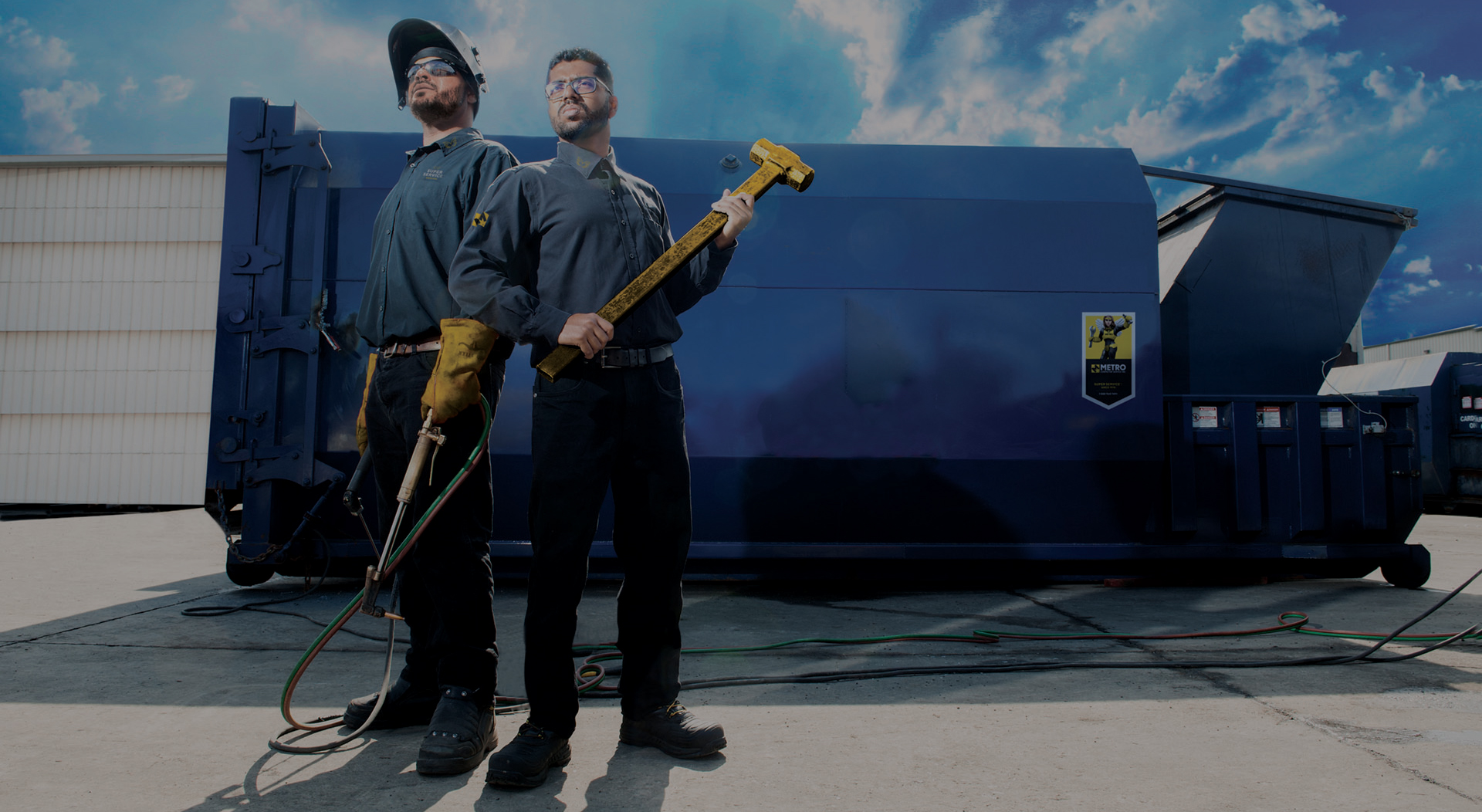Cardboard Baler Rental Solutions for Streamlined Recycling
Cardboard Baler Rental Solutions for Streamlined Recycling
Blog Article
Discovering the Essential Role of Waste Devices in Modern Recycling Processes and Sustainable Waste Disposal Practices
The important function of waste devices in modern reusing procedures emphasizes its significance in attaining lasting waste disposal practices. Advanced systems, such as automated arranging innovations and compactors, not only enhance effectiveness however additionally play a crucial duty in lowering contamination prices and enhancing material healing. As the demand for even more sustainable remedies grows, it is vital to examine exactly how these technologies adjust to evolving obstacles within waste administration. What cutting-edge improvements are on the horizon that could additionally change these procedures?
Significance of Waste Devices
Why is waste tools important in the reusing process? The performance of reusing operations hinges considerably on the schedule and functionality of waste equipment. This classification of equipment and devices is crucial for the effective collection, processing, and sorting of recyclable products. By helping with the separation of materials, waste tools reduces contamination, which is extremely important in making certain top notch recyclables that can be reintroduced right into producing cycles.
Moreover, waste equipment boosts functional effectiveness and security within recycling centers. Advanced equipment, such as shredders and balers, enables the fast processing of huge quantities of waste, lowering labor expenses and processing time. On top of that, using customized tools lowers the threat of injury amongst employees by automating harmful jobs.
Additionally, the environmental impact of recycling is amplified by reliable waste devices. By optimizing the reusing procedure, facilities can significantly lower the quantity of waste sent to land fills, therefore adding to sustainability initiatives. Finally, waste equipment is not just a supplementary component of recycling; it is a fundamental element that drives efficiency, safety and security, and environmental stewardship in modern waste monitoring methods.
Kinds Of Waste Tools
The effectiveness of reusing operations is carefully connected to the specific kinds of waste tools utilized in the process. baler rental. Different categories of equipment are indispensable to the collection, sorting, processing, and transportation of recyclable materials
To start with, collection equipment, such as waste collection trucks and containers, is essential for gathering recyclables from different sources, consisting of residential, commercial, and industrial places. As soon as collected, arranging equipment, including conveyor belts, shredders, and magnetic separators, plays an important duty in distinguishing different material kinds, guaranteeing that pollutants are eliminated prior to handling.
Handling tools, such as balers and compactors, better prepares products for recycling by pressing and packaging them into convenient dimensions. This not just enhances area however likewise improves transport effectiveness. In addition, specialized machinery like granulators and extruders is utilized for changing materials right into recyclable types, specifically in plastic recycling.

Duty in Recycling Procedures
In reusing procedures, the duty of waste tools is crucial in ensuring effectiveness and efficiency at every phase. This tools includes a variety of equipment designed to manage, find out procedure, and sort materials that are to be reused. The preliminary stage entails collection and transportation, where compactors and balers play a crucial function in optimizing the volume of products for transportation, therefore lowering operational expenses.
As soon as at the reusing facility, shredders and crushers enter play, breaking down materials right into manageable sizes ideal for additional processing. These makers add to boosting the surface of recyclables, facilitating a lot more efficient material healing. Sorting systems, equipped with innovative innovations such as conveyor belts and optical sensors, guarantee that materials are properly separated by type, consequently optimizing the top quality of the recycled final product.
In addition, specialized devices for handling details products-- such as glass, plastics, and steels-- makes sure that each type is managed in one of the most effective fashion. In general, the integration of innovative waste devices into the reusing procedure not only enhances procedures however also substantially adds to the overall recovery prices of valuable materials, underscoring its crucial function in contemporary recycling efforts.
Influence on Sustainable Practices
Via the effective operation of waste tools, reusing procedures considerably boost sustainable practices throughout numerous sectors. By streamlining sorting and handling functions, progressed waste equipment lessens contamination in recyclable products, consequently improving the top quality of recycled output.

Additionally, the integration of wise technologies in waste management systems allows for real-time data tracking and evaluation, leading to even more informed decision-making and operational performances. As markets significantly focus on sustainability, the role of waste equipment comes to be extremely read this important in shaping practices that align with ecological stewardship and regulatory conformity. Inevitably, the harmony in between waste equipment and reusing processes plays a vital role beforehand more comprehensive sustainability goals throughout neighborhoods and sectors alike.
Future Trends in Waste Management
Arising patterns in waste management are poised to reshape the landscape of recycling and resource healing significantly. One of one of the most pivotal changes is the combination of innovative technologies such as fabricated intelligence, maker learning, and the Internet of Things (IoT) These innovations help with enhanced arranging processes, boosting the efficiency and accuracy of reusing procedures. Smart waste bins furnished with sensing units can keep an eye on waste degrees in real-time, maximizing collection courses and minimizing operational costs.
Additionally, the round economy model is gaining traction, promoting the concept of recycling materials rather than throwing away them. This fad motivates organizations to develop products with end-of-life considerations in mind, driving the requirement for innovative waste administration solutions.
Moreover, public recognition and involvement in sustainability methods get on the rise, resulting in boosted engagement in reusing programs. Federal government policies are likewise developing, with more stringent laws on waste disposal and rewards for sustainable methods.
As these trends assemble, they produce an extra effective, sustainable waste monitoring system that not only minimizes ecological impact yet likewise cultivates financial growth with resource recovery and advancement in waste equipment. The future of waste management looks promising, driven by technology and a dedication to sustainability.
Verdict
To conclude, waste devices plays an essential duty in boosting the performance and performance of modern-day reusing processes. By lessening contamination and taking full advantage of material recovery, progressed machinery sustains lasting garbage disposal practices and fosters a circular economic climate. The consolidation of wise technologies even more enhances these efforts, guaranteeing liable environmental stewardship. As waste management proceeds to evolve, the value of ingenious waste equipment will certainly remain vital in achieving sustainability objectives and attending to the obstacles of resource depletion.
Report this page